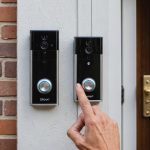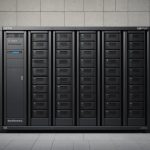Unlock Ultimate Energy Savings in Your Smart Home: Innovative Tips for Enhanced Efficiency
In the era of smart homes, optimizing energy efficiency is not just a matter of saving money, but also of contributing to a more sustainable future. Here’s a comprehensive guide on how to unlock ultimate energy savings in your smart home, using innovative tips and the latest in home technology.
Mastering Your Home’s Energy Efficiency
When it comes to energy efficiency, the foundation lies in how well you manage your home’s systems. Here are some key strategies to get you started:
Have you seen this : Seamless Living: Innovative Strategies for Merging Voice Assistants with Smartphone-Managed Smart Homes
Smart Thermostats: The Heart of Energy Efficiency
Smart thermostats are one of the most effective tools for managing your home’s temperature and energy consumption. These devices can learn your daily schedule and adjust the temperature accordingly, ensuring your home is always at the optimal temperature without wasting energy.
- Why it works: Smart thermostats can cut energy use by up to 15% annually by automating temperature adjustments based on your habits[2].
- Steps to take:
- Install a smart thermostat and set it up to learn your daily routine.
- Place the thermostat on an interior wall, away from direct sunlight, drafts, and doorways to ensure accurate readings.
- Lower the temperature by 7°F to 10°F when you’re asleep or away from home to save energy[1].
Optimizing Your HVAC System
Your HVAC system is one of the largest consumers of energy in your home. Here’s how to optimize it:
Additional reading : Maximize Your Smartphone’s Potential: A Comprehensive Guide to Smart Home Automation and Scheduling Mastery
- Regular Maintenance: Schedule an HVAC tune-up annually or if you notice issues like unusual noises, smells, or uneven airflow. Replace furnace and heat pump filters every three months to maintain proper airflow[1].
- Clear Vents and Registers: Ensure that furniture or curtains aren’t blocking vents to allow for efficient airflow.
- Chimney Cleaning: Arrange for chimney cleaning to prevent soot buildup, which can block airflow and reduce heating efficiency[1].
Leveraging Smart Home Devices
Smart home devices are revolutionizing how we manage energy. Here’s how you can use them to your advantage:
Smart Lighting: Bright Ideas for Energy Savings
Smart lighting can significantly reduce your energy consumption. Here’s how to make the most of it:
- Automate Lighting: Use smart lighting systems that can automatically turn off or dim lights when not needed. This can be done using motion sensors or by integrating with your smart home system to adjust lighting based on your presence and natural light availability[2].
- LED Bulbs: Switch to LED bulbs, which use 75% less energy and last much longer than traditional incandescent bulbs[2].
- Example: During the day, AI-powered lighting can dim indoor lights when natural sunlight is sufficient, reducing unnecessary energy consumption.
Smart Plugs: Cutting Phantom Energy Waste
Smart plugs are simple yet effective tools for eliminating phantom energy waste from devices left on standby.
- Why it works: Smart plugs can turn off devices when not in use, preventing energy waste from electronics left in standby mode[2].
- Steps to take:
- Use smart plugs for devices like TVs, printers, and phone chargers that silently drain power even when turned off.
- Set electrical devices to low-power or power-saving mode when not in use[1].
Improving Home Insulation
Proper insulation is crucial for maintaining energy efficiency in your home.
Sealing Air Leaks and Adding Insulation
Here’s how you can enhance your home’s insulation:
- Seal Air Leaks: Use weatherstripping or caulk around windows and doors to prevent drafts. This simple step can reduce heating and cooling costs by up to 30%[2].
- Install Energy-Efficient Windows: Consider double-glazed windows with low-emissivity coatings to reduce heat transfer and improve insulation.
- Add Insulation: Focus on insulating attics, walls, and basements to stabilize indoor temperatures.
Automating Your Home with Smart Systems
Automation is the key to maximizing energy efficiency in smart homes.
Integrating Solar Energy with Smart Home Technology
If you have solar panels, integrating them with smart home technology can enhance your energy savings.
- Schedule Energy Usage: Use smart home devices to schedule energy-intensive activities like laundry or dishwasher use during peak solar production hours. This ensures you’re using the energy you generate efficiently[4].
- Energy Storage Systems: Consider home energy storage systems that store excess energy generated by solar panels for use during peak demand times or power outages. This can significantly reduce your reliance on the grid and lower your energy costs[5].
Upgrading to Energy-Efficient Appliances
Using energy-efficient appliances is another way to reduce your energy consumption.
ENERGY STAR-Certified Appliances
Here’s why you should upgrade to ENERGY STAR-certified appliances:
- Why it works: ENERGY STAR-rated appliances are designed for reliability, using less energy and conserving resources while keeping your home comfortable[1].
- Steps to take:
- Replace old appliances with ENERGY STAR-certified models.
- Look for appliances with safety features like automatic shut-offs, energy-saving modes, or overheat protection to prevent malfunctions.
- Regularly clean and replace filters in your appliances to maintain efficiency[1].
Managing Your Energy Usage in Real Time
Real-time monitoring and control are essential for optimizing energy efficiency.
Energy Monitoring Systems
Here’s how energy monitoring systems can help:
- Real-Time Insights: Use energy monitoring systems to get real-time insights into your electricity consumption. This helps you spot energy-hogging appliances and make necessary adjustments[2].
- Smart Home Apps: Many smart home systems come with mobile apps that allow you to monitor and control your energy usage remotely. This ensures you can adjust your settings even when you’re not at home.
Enhancing Home Security and Efficiency
Home security and energy efficiency can go hand in hand with the right technologies.
Smart Home Security Integration
Here’s how smart home security can enhance your energy efficiency:
- Smart Home Systems: Smart home systems can integrate with your security devices to ensure that all systems are optimized for energy efficiency. For example, when your security system detects that you’re away, it can automatically adjust the thermostat and lighting to save energy[2].
- Google Home and Voice Control: Using voice-controlled systems like Google Home can make it easier to manage your smart devices, including your thermostat, lighting, and security systems, all from one place.
Practical Tips for Homeowners
Here are some practical tips to help you make the most of your smart home devices:
Unplug Unused Electronics
- Why it works: Unplugging unused electronics can stop unnecessary energy consumption and reduce fire risk[1].
- Steps to take:
- Disconnect devices when you’re away for extended periods.
- Look for devices with lights, displays, or clocks that remain on even when powered down.
Use Natural Sunlight for Heating
- Why it works: Using natural sunlight can help warm your home during the day, reducing the need for heating[1].
- Steps to take:
- Open curtains and blinds during the day to let in sunlight.
- Close curtains or blinds at night to help insulate heat.
Table: Comparing Smart Home Energy-Saving Features
| Feature | Description | Energy Savings | Effort Required |
|---|---|---|---|
| Smart Thermostats | Adjusts temperature based on your habits | Up to 15% annually | Medium |
| Smart Lighting | Automates lighting based on presence and natural light | Up to 75% less energy than incandescent bulbs | Low |
| Smart Plugs | Cuts power to devices when not in use | Prevents phantom energy waste | Low |
| Home Insulation | Seals air leaks and adds insulation to walls, attics, and basements | Up to 30% reduction in heating and cooling costs | Medium to High |
| Energy-Efficient Appliances | Uses less energy and conserves resources | Varies by appliance | Low to Medium |
| Solar Energy Integration | Schedules energy usage during peak solar production hours | Significant reduction in grid reliance | Medium to High |
| Energy Monitoring Systems | Provides real-time insights into electricity consumption | Helps identify energy-hogging appliances | Low |
Quotes from Experts
- “Smart home devices have revolutionized how we manage energy. These AI-powered energy solutions provide unprecedented control, helping reduce waste and lower bills while ensuring convenience and comfort.”[2]
- “By integrating solar energy with smart home technology, homeowners can ensure they’re using the energy they generate efficiently, reducing their reliance on the grid and lowering their energy costs.”[4]
- “Proper insulation is crucial for maintaining energy efficiency in your home. Sealing air leaks and adding insulation can reduce heating and cooling costs by up to 30%.”[2]
Saving energy in your smart home is not just about cutting costs; it’s about creating a sustainable and efficient living environment. By leveraging smart thermostats, automating lighting, upgrading to energy-efficient appliances, and integrating solar energy with smart home technology, you can significantly reduce your energy consumption.
Remember, every small change counts. Whether it’s using smart plugs to cut phantom energy waste or optimizing your HVAC system, these innovative tips can help you unlock ultimate energy savings in your smart home.
So, take the first step today. Invest in smart home devices, optimize your energy usage, and contribute to a greener future. Your wallet and the planet will thank you.




